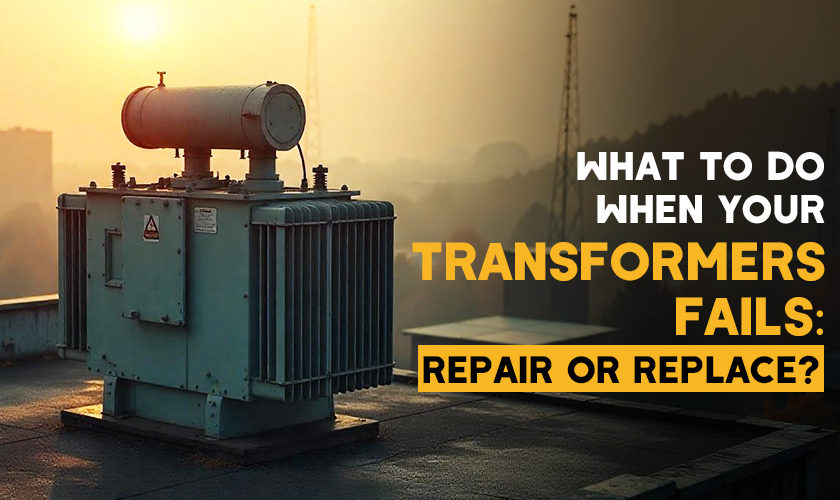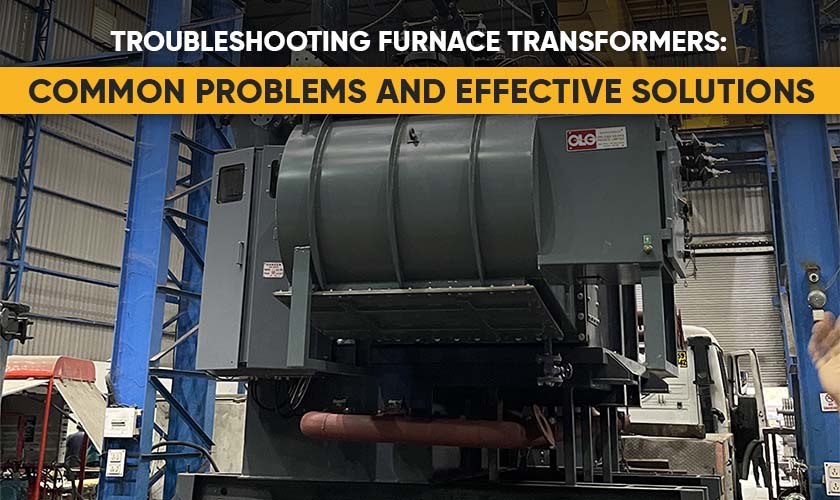A transformer failure can feel like the electrical equivalent of a flat tire in the middle of nowhere, frustrating, disruptive, and urgent. Whether you're running a factory, managing a commercial site, or maintaining a utility line, a downed transformer brings everything to a halt. But before you rush into a decision, take a breath and ask the most critical question: Should you repair the transformer or replace it altogether?
This guide walks you through the thought process behind making the right choice, based on the condition of your transformer, cost considerations, and the urgency of your situation.
Understanding Transformer Failure
Transformer failure doesn’t always announce itself dramatically. Sometimes the signs are subtle and gradual. Here’s what you should watch out for:
- A noticeable drop or fluctuation in voltage output
- Unusual noises such as humming or buzzing
- Overheating or unusual smells (especially a burnt odour)
- Oil leaks or signs of moisture ingress
- Frequent tripping of connected breakers or fuses
These are all signs that your transformer is struggling. If left unchecked, minor issues can lead to complete failure, causing even more damage and extended downtime.
At this point, always disconnect the transformer and involve a professional for inspection. Safety first—these are high-voltage systems and not something to DIY.
Factors to Consider: Repair or Replace?
When evaluating your options, there are a few key questions you need to ask:
1. How old is the transformer?If the unit is still within its expected operational lifespan (typically 20–30 years), and hasn’t had major issues before, repairing it could be a cost-effective option. However, if it's approaching the end of its lifecycle, repairs may only offer a temporary fix.
2. What is the extent of the damage?Small issues like degraded bushings or oil impurities can often be repaired. But if there’s major insulation failure, winding damage, or core issues, replacement may be more practical in the long run.
3. How critical is the application?If downtime is unacceptable due to the nature of your operations, replacement might be the quicker path to restoring full function—especially if repair parts have long lead times.
4. What's the cost difference?Repair is generally less expensive upfront. However, if the repair cost exceeds 50–60% of the cost of a new unit, replacement is usually the wiser investment.
When Repair Makes Sense
Transformer repair is a smart option under the right circumstances. These include:
- Minor wear and tear (e.g., leaking gaskets, dirty oil, loose connections)
- Transformer is relatively new and well-maintained
- The unit fits into a custom or complex system where replacement would involve reconfiguration
- You need a quick fix to restore operations temporarily
At Makpower Transformers, we’ve helped many clients extend the life of their equipment through reliable, professional repairs. We ensure detailed testing, diagnostics, and the use of top-tier replacement parts to get your transformer safely back in service.
When It’s Better to Replace
There are also times when replacement is simply the better—and safer—option. Consider replacing your transformer if:
- It has already undergone multiple repairs in the past
- It's beyond 25 years of age and performance is inconsistent
- The fault is severe, such as complete insulation breakdown or winding failure
- Newer technology can provide better efficiency and long-term savings
Replacing a failed transformer gives you the opportunity to upgrade your equipment, improve energy efficiency, and reduce the risk of future failure. Our team at Makpower Transformers can help you assess your load requirements and select a new transformer that fits your operational needs perfectly.
How Makpower Helps You Decide
We don’t believe in a one-size-fits-all approach. When you consult with Makpower Transformers, we perform a comprehensive assessment of your failed transformer. Our process includes:
- Full-site inspection and fault analysis
- Cost-benefit comparison between repair and replacement
- Transparent reporting and timelines
- Ongoing support through installation or repairs
Whether it’s bringing your existing transformer back to life or installing a brand-new, high-efficiency unit, we’re here to keep your power on—and your downtime minimal.
Tips to Prevent Future Failures
Prevention is always better than cure. To avoid the headache of transformer failure again, here’s what you should be doing regularly:
- Schedule preventive maintenance: Include thermal scanning, insulation resistance testing, and oil analysis.
- Clean and ventilate the site: Dust, debris, and moisture can silently damage your unit.
- Watch the load: Never exceed the transformer’s rated capacity for long periods.
- Monitor temperature and fluid levels: Overheating and low oil can be warning signs.
Routine maintenance and early detection can prevent sudden failures, reduce repair costs, and improve equipment lifespan. Makpower Transformers also offers condition monitoring and preventive maintenance solutions tailored to your equipment.
Final Thoughts: Making the Right Call
Transformer failure might feel like a disaster, but it's also a chance to make a smart upgrade—or squeeze a few more years from your current system. Repair is great when the damage is minor and the unit still has life left. Replacement is ideal when safety, reliability, and performance are on the line.
In either case, don’t rush your decision. Assess the situation with care. Consult with professionals. And if you're in doubt, remember—we’re always here to help you make the right call.
At Makpower Transformers, our priority is to power your business forward—efficiently, safely, and reliably.





